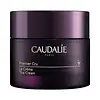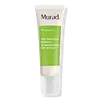What's inside
What's inside
 Key Ingredients
Key Ingredients

 Benefits
Benefits

 Concerns
Concerns

 Ingredients Side-by-side
Ingredients Side-by-side

Water
Skin ConditioningGlycerin
HumectantButylene Glycol
HumectantCaprylic/Capric Triglyceride
MaskingHydrogenated Ethylhexyl Olivate
EmollientCetearyl Alcohol
EmollientCetearyl Glucoside
EmulsifyingCoco-Caprylate/Caprate
EmollientHydrogenated Olive Oil Unsaponifiables
EmollientSesamum Indicum Seed Oil
EmollientVitis Vinifera Seed Oil
EmollientButyrospermum Parkii Butter Extract
Skin ConditioningPropanediol
SolventPalmitoyl Grapevine Shoot Extract
AntioxidantPalmitoyl Grape Seed Extract
Skin ConditioningPentaerythrityl Distearate
EmulsifyingPotassium Cetyl Phosphate
EmulsifyingCarbomer
Emulsion StabilisingCaprylyl Glycol
EmollientXanthan Gum
EmulsifyingHydrolyzed Hyaluronic Acid
HumectantMagnolia Grandiflora Bark Extract
AntimicrobialPotassium Sorbate
PreservativeTocopherol
AntioxidantHelianthus Annuus Seed Oil
EmollientAdenosine
Skin ConditioningSodium Hydroxide
BufferingSodium Phytate
Gleditsia Triacanthos Seed Extract
Paeonia Lactiflora Root Extract
Skin ConditioningParfum
MaskingGeraniol
PerfumingLinalool
PerfumingCitronellol
PerfumingWater, Glycerin, Butylene Glycol, Caprylic/Capric Triglyceride, Hydrogenated Ethylhexyl Olivate, Cetearyl Alcohol, Cetearyl Glucoside, Coco-Caprylate/Caprate, Hydrogenated Olive Oil Unsaponifiables, Sesamum Indicum Seed Oil, Vitis Vinifera Seed Oil, Butyrospermum Parkii Butter Extract, Propanediol, Palmitoyl Grapevine Shoot Extract, Palmitoyl Grape Seed Extract, Pentaerythrityl Distearate, Potassium Cetyl Phosphate, Carbomer, Caprylyl Glycol, Xanthan Gum, Hydrolyzed Hyaluronic Acid, Magnolia Grandiflora Bark Extract, Potassium Sorbate, Tocopherol, Helianthus Annuus Seed Oil, Adenosine, Sodium Hydroxide, Sodium Phytate, Gleditsia Triacanthos Seed Extract, Paeonia Lactiflora Root Extract, Parfum, Geraniol, Linalool, Citronellol
Homosalate 4%
Skin ConditioningEthylhexyl Salicylate 4%
UV AbsorberButyl Methoxydibenzoylmethane 2%
UV AbsorberOctocrylene 2%
UV AbsorberWater
Skin ConditioningC12-15 Alkyl Benzoate
AntimicrobialGlycerin
HumectantHydrogenated Vegetable Glycerides Citrate
EmollientTapioca Starch
Butyrospermum Parkii Butter
Skin ConditioningCaprylyl Methicone
Skin ConditioningCetearyl Alcohol
EmollientDicaprylyl Carbonate
EmollientHelianthus Annuus Seed Oil
EmollientDiethylhexyl 2,6-Naphthalate
EmollientEthoxydiglycol
HumectantPhenyl Trimethicone
Skin ConditioningSodium Polyacrylate
AbsorbentButylene Glycol
HumectantVitis Vinifera Seed Oil
EmollientJojoba Alcohol
EmollientPotassium Jojobate
Skin ConditioningPanthenol
Skin ConditioningArginine
MaskingAllantoin
Skin ConditioningBisabolol
MaskingDioscorea Villosa Root Extract
Skin ConditioningDisodium EDTA
Octadecyl Di-T-Butyl-4-Hydroxyhydrocinnamate
AntioxidantPersea Gratissima Oil
Skin ConditioningTocopheryl Acetate
AntioxidantBenzoic Acid
MaskingDehydroacetic Acid
PreservativeDisodium Adenosine Triphosphate
Skin ConditioningDipotassium Glycyrrhizate
HumectantPolymethylsilsesquioxane
Selaginella Lepidophylla Extract
EmollientTrifolium Pratense Flower Extract
AstringentPropylene Glycol
HumectantBetaine
HumectantInositol
HumectantTaurine
BufferingTrehalose
HumectantUrea
BufferingYeast Amino Acids
HumectantProline
Skin ConditioningGlycine
BufferingSorbitol
HumectantCarica Papaya Fruit Extract
Skin ConditioningAlgin
MaskingSodium Hyaluronate
HumectantHydrolyzed Soy Protein
HumectantCopper Tripeptide-1
Skin ConditioningIris Florentina Root Extract
MaskingPhenoxyethanol
PreservativeParfum
MaskingLimonene
PerfumingLinalool
PerfumingHomosalate 4%, Ethylhexyl Salicylate 4%, Butyl Methoxydibenzoylmethane 2%, Octocrylene 2%, Water, C12-15 Alkyl Benzoate, Glycerin, Hydrogenated Vegetable Glycerides Citrate, Tapioca Starch, Butyrospermum Parkii Butter, Caprylyl Methicone, Cetearyl Alcohol, Dicaprylyl Carbonate, Helianthus Annuus Seed Oil, Diethylhexyl 2,6-Naphthalate, Ethoxydiglycol, Phenyl Trimethicone, Sodium Polyacrylate, Butylene Glycol, Vitis Vinifera Seed Oil, Jojoba Alcohol, Potassium Jojobate, Panthenol, Arginine, Allantoin, Bisabolol, Dioscorea Villosa Root Extract, Disodium EDTA, Octadecyl Di-T-Butyl-4-Hydroxyhydrocinnamate, Persea Gratissima Oil, Tocopheryl Acetate, Benzoic Acid, Dehydroacetic Acid, Disodium Adenosine Triphosphate, Dipotassium Glycyrrhizate, Polymethylsilsesquioxane, Selaginella Lepidophylla Extract, Trifolium Pratense Flower Extract, Propylene Glycol, Betaine, Inositol, Taurine, Trehalose, Urea, Yeast Amino Acids, Proline, Glycine, Sorbitol, Carica Papaya Fruit Extract, Algin, Sodium Hyaluronate, Hydrolyzed Soy Protein, Copper Tripeptide-1, Iris Florentina Root Extract, Phenoxyethanol, Parfum, Limonene, Linalool
 Reviews
Reviews

Ingredients Explained
These ingredients are found in both products.
Ingredients higher up in an ingredient list are typically present in a larger amount.
Butylene Glycol (or BG) is used within cosmetic products for a few different reasons:
Overall, Butylene Glycol is a safe and well-rounded ingredient that works well with other ingredients.
Though this ingredient works well with most skin types, some people with sensitive skin may experience a reaction such as allergic rashes, closed comedones, or itchiness.
Learn more about Butylene GlycolCetearyl alcohol is a mixture of two fatty alcohols: cetyl alcohol and stearyl alcohol. It is mainly used as an emulsifier. Emulsifiers help prevent the separation of oils and products. Due to its composition, it can also be used to thicken a product or help create foam.
Cetearyl alcohol is an emollient. Emollients help soothe and hydrate the skin by trapping moisture.
Studies show Cetearyl alcohol is non-toxic and non-irritating. The FDA allows products labeled "alcohol-free" to have fatty alcohols.
This ingredient is usually derived from plant oils such as palm, vegetable, or coconut oils. There is debate on whether this ingredient will cause acne.
Due to the fatty acid base, this ingredient may not be Malassezia folliculitis safe.
Learn more about Cetearyl AlcoholGlycerin is already naturally found in your skin. It helps moisturize and protect your skin.
A study from 2016 found glycerin to be more effective as a humectant than AHAs and hyaluronic acid.
As a humectant, it helps the skin stay hydrated by pulling moisture to your skin. The low molecular weight of glycerin allows it to pull moisture into the deeper layers of your skin.
Hydrated skin improves your skin barrier; Your skin barrier helps protect against irritants and bacteria.
Glycerin has also been found to have antimicrobial and antiviral properties. Due to these properties, glycerin is often used in wound and burn treatments.
In cosmetics, glycerin is usually derived from plants such as soybean or palm. However, it can also be sourced from animals, such as tallow or animal fat.
This ingredient is organic, colorless, odorless, and non-toxic.
Glycerin is the name for this ingredient in American English. British English uses Glycerol/Glycerine.
Learn more about GlycerinHelianthus Annuus Seed Oil is the oil derived from the seeds of a Sunflower. Sunflower seed oil is non-fragrant. It is an emollient, meaning it helps to soften the skin.
Sunflower seed oil contains many fatty acids. The fatty acids found in sunflower seeds include (from highest amount to least): linoleic acid, myristic acid, palmitic acid, stearic acid, arachidic acid, oleic acid, and linolenic acid.
These fatty acids help the skin create ceramides. Ceramides play a role in repairing the skin barrier.
Helianthus Annuus Seed Oil helps moisturize the skin. This in turn helps the skin look more rejuvenated and smoother.
Sunflowers are rich in vitamin E.
Historians believe Indigenous cultures of North America domesticated sunflowers before corn. Thus they relied on sunflower oil for a variety of uses. One such use is moisturizing skin and hair.
Sunflower seed oil may not be fungal acne safe. We recommend speaking with a professional if you have any concerns.
Learn more about Helianthus Annuus Seed OilLinalool is a fragrance and helps add scent to products. It's derived from common plants such as cinnamon, mint, citrus, and lavender.
Like Limonene, this ingredient oxidizes when exposed to air. Oxidized linalool can cause allergies and skin sensitivity.
This ingredient has a scent that is floral, spicy tropical, and citrus-like.
Learn more about LinaloolParfum is a catch-all term for an ingredient or more that is used to give a scent to products.
Also called "fragrance", this ingredient can be a blend of hundreds of chemicals or plant oils. This means every product with "fragrance" or "parfum" in the ingredients list is a different mixture.
For instance, Habanolide is a proprietary trade name for a specific aroma chemical. When used as a fragrance ingredient in cosmetics, most aroma chemicals fall under the broad labeling category of “FRAGRANCE” or “PARFUM” according to EU and US regulations.
The term 'parfum' or 'fragrance' is not regulated in many countries. In many cases, it is up to the brand to define this term.
For instance, many brands choose to label themselves as "fragrance-free" because they are not using synthetic fragrances. However, their products may still contain ingredients such as essential oils that are considered a fragrance by INCI standards.
One example is Calendula flower extract. Calendula is an essential oil that still imparts a scent or 'fragrance'.
Depending on the blend, the ingredients in the mixture can cause allergies and sensitivities on the skin. Some ingredients that are known EU allergens include linalool and citronellol.
Parfum can also be used to mask or cover an unpleasant scent.
The bottom line is: not all fragrances/parfum/ingredients are created equally. If you are worried about fragrances, we recommend taking a closer look at an ingredient. And of course, we always recommend speaking with a professional.
Learn more about ParfumVitis Vinifera Seed Oil comes from the grape vine. Grape seeds are a byproduct of creating grape juice or wine.
The components of grape seeds have many skin benefits. Research has found it to be antimicrobial and anti-inflammatory. It also contains many potent antioxidants such as Vitamin E , Vitamin C, proanthocyanidins, polyphenols, flavonoids, and anthocyanins. Proanthocyanidin has been shown to help even out skin tone.
Antioxidants help fight free-radical molecules. Free-radical molecules are capable of damaging our cells and other genetic material. Antioxidants help stabilize free-radicals by donating extra electrons. Grape seed extract may help reduce the signs of aging.
The antimicrobial properties of grape seed may help treat acne. However, more research is needed to support this claim.
Grape seed has also been found to help absorb UV rays. Grape seed extract should not replace your sunscreen.
The fatty acids of grape seed oil give it emollient properties. Emollients help soothe and soften your skin by creating a film. This film traps moisture within, keeping your skin hydrated.
Learn more about Vitis Vinifera Seed OilWater. It's the most common cosmetic ingredient of all. You'll usually see it at the top of ingredient lists, meaning that it makes up the largest part of the product.
So why is it so popular? Water most often acts as a solvent - this means that it helps dissolve other ingredients into the formulation.
You'll also recognize water as that liquid we all need to stay alive. If you see this, drink a glass of water. Stay hydrated!
Learn more about Water